
Most Admired Champagne Brands 2017: 1-15
So, the 2016 growing season was one of the most difficult in living memory. Thank heavens for a weather change in August through to harvest in mid-September
The Champagnois were off the hook and in future editions of this supplement we will report on how that particular ‘problem child’ vintage is progressing. But right now we have the latest edition of Drinks International’s The World’s Most Admired Champagne Brands.
The ranking that follows is not necessarily about being the best of anything (see link for full methodology). The survey results are purely about opinions and perceptions – but from people who are in the trade and know about Champagne.
So while we make no claims to be definitive in terms of quality, we are delivering a listing based on worthwhile opinions from people who know what they are talking about. Hopefully our survey will affirm your knowledge of the sector and possibly challenge some of your perceptions. Time moves on and sometimes one’s ideas become out of date and need to be checked and balanced.
And so to the top 15…
---------------------------------------------------------------------------
1. BOLLINGER
Our criteria for success in the Drinks International World’s Most Admired Champagne Brands survey might be summarised as ‘consistent quality’
The one brand that exemplifies this, arguably more than any other, is Bollinger which, after a special year in 2016, returns to the number one slot it has already occupied twice before.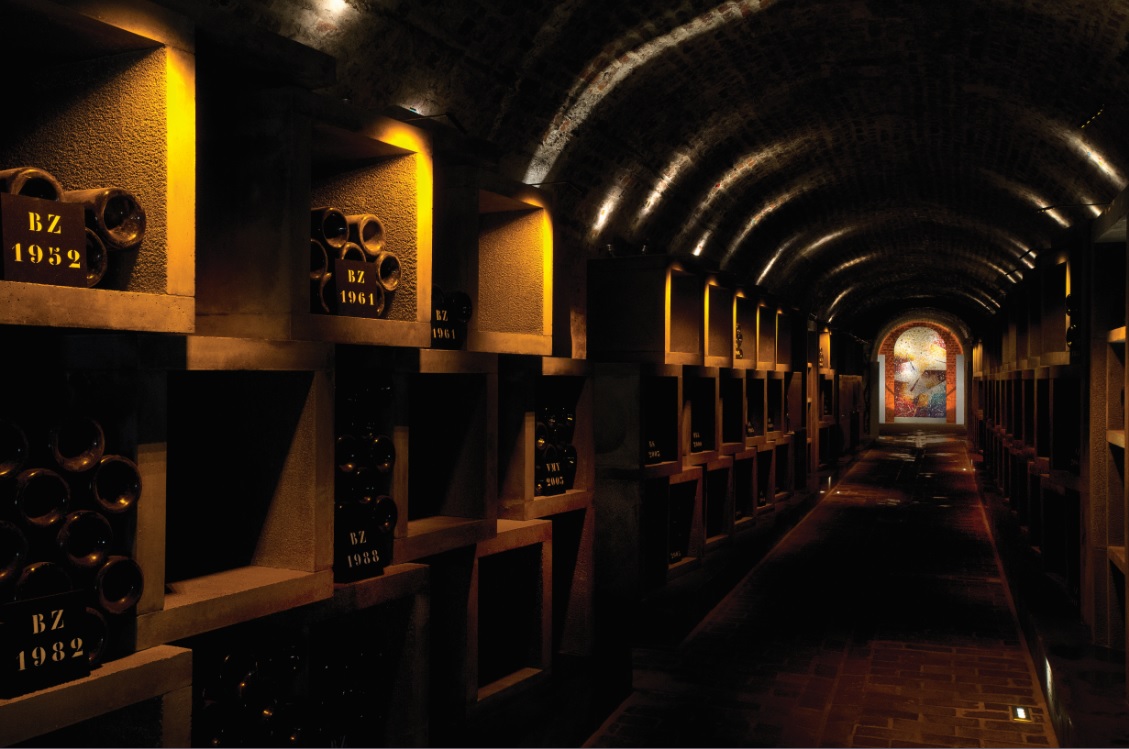
In June 2016 Bollinger passed another milestone in the quiet revolution chief executive Jérôme Philipon has instigated since he took over the house in 2008 with the opening of two historically important new cellars at its home in the Grand Cru village of Aÿ. This was the culmination of a project that dates back to 2010 when, during the inventory of ancient stocks stored in the tunnels, caves and galleries beneath the house, an abandoned cellar containing old bottles and magnums of reserve wines was discovered.
The forgotten cellar was divided up by amazingly preserved wooden panels used to identify the unlabelled bottles. Research revealed the origin and vintage of batches including the likes of 1886 Le Mesnil-sur-Oger, an 1893 Verzenay and even a 1914 Aÿ. The reserve wines found here show that even 130 years ago Bollinger kept such wines separately according to cru and vintage, as it does today. After archive research the meaning of an inscription CB14 was found to indicate the vintage 1830, the year after the house was founded, and the idea of showcasing this extraordinary legacy was born.
These discoveries and this idea initiated a massive restoration project in 2012 under the guidance of cellar master Gilles Descôtes. Collecting bottles from different cellars and in varying states of preservation he and his team restored more than 4,000 successfully. To show these off to the best effect, Philipon decided to create two new cellars – one named La Réserve to house the single village reserve wines and the Galérie 1829 to show off the old vintages successfully restored in this three-year project. In all the two wine libraries contain champagnes from more than 65 vintages going back to 1830.
While the Galérie 1829 holds 7,330 containers in a mixture of bottle, magnum and jeroboam format from 65 vintages, the La Réserve collection, with 3,125 containers from 45 vintages representing 16 crus is perhaps more significant for Bollinger, as it represents the blueprint for the house’s flagship Special Cuvée blend. Walking round this cellar last June it was interesting to note the significance of crus such as Cuis in the northern part of the Côte des Blancs, a village famous for its brisk, austere and long-lived Chardonnay.
OPENING TASTINGS
At the start of the tasting of old vintages last summer as part of the cellar opening celebrations, Bollinger chose to showcase another significant cru to the Bollinger style, namely Verzenay. The assembled international press corps had the chance to taste four reserve magnums of Verzenay from the 2002, 1999, 1992 and 1985 harvests. These building blocks for Special Cuvée were super-concentrated and aromatically complex, evolving from the orange citrus notes of the still remarkably fresh ’02.
This introduction prepared the way for the central part of the tasting, where Philipon and Descôtes had selected what they considered to be a combination of the best and most significant vintages in the Bollinger canon from each decade. They kicked off with Vieilles Vignes Françaises 1969, then Bollinger RD 1952 – the original releases of these two cuveés – followed by the 1945, 1937, 1924 and 1914 vintages. The assembled international journalists were then treated to one of the only 13 remaining, successfully restored bottles of Bollinger 1830, 54 of which were unearthed during the project.
For me the highlight was the multi-layered, intense, aromatically evolved ’69 Vieilles Vignes Françaises. But although the 1830 had lost its fizz, this complex, nutty, richly concentrated wine was by far the best 19th-century champagne I’ve tasted.
As a demonstration of consistent excellence over nearly two centuries this was a feat that few, if any, other houses could match, underlying our voting Academy’s support for the Bollinger brand.
2. KRUG
Krug is the only brand other than Bollinger which has never been out of the top quartet in the four years we have put together this supplement. It now boasts two second places and made it to the top of the pile last 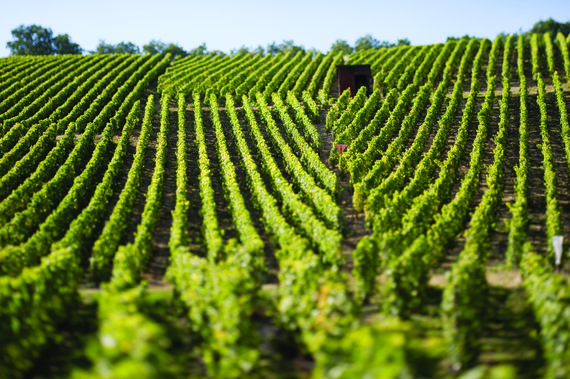 year. As arguably the most distinctive brand within the LVMH group that dominates the champagne category, its unique flavour profile stands outside the pack. As one senior buyer noted recently, it’s the Marmite of champagne – no pejorative connotation implied.
year. As arguably the most distinctive brand within the LVMH group that dominates the champagne category, its unique flavour profile stands outside the pack. As one senior buyer noted recently, it’s the Marmite of champagne – no pejorative connotation implied.
Love or hate the style – our Academy is very clear about which side of the fence they stand – Krug’s careful sourcing, long ageing, complex assembly and specific production method, with fermentation taking place in small oak barrels, makes it a wine that anyone ambitious starting out in the business wants to taste. And once they have, they won’t forget the experience.
Add in a direct family connection that goes back to the origins of the house – curiously enough our top five brands all have an active family involvement in their operations – and you have a recipe for ongoing success in building and maintaining the best sort of brand profile. House director Olivier Krug is the sixth generation of the family to be involved, following his uncle Rémi and father Henri.
Bad management or poor winemaking both have the potential to damage this image, but Moët Hennessy would be foolish to allow such a jewel to suffer from either. Cellar master Eric Lebel, who has been guardian of the Krug taste since he joined in 1998, certainly still has his eye very much on the ball.
FOOD PAIRINGS
While there were many marketing initiatives, mainly around food in 2016 – Krug Ambassade’s chefs from a selection of the world’s top Michelin-starred restaurants is an ongoing programme where the food-friendly flagship Grande Cuvée is paired with innovative and challenging dishes – the quality of what’s in the bottle remains central.
Each year Krug likes to take one versatile, single, but humble ingredient that stimulates the curiosity and creativity of the chefs from Krug Ambassades around the world, encouraging them to produce imaginative, innovative dishes to enhance the experience of tasting Krug Grande Cuvée. The latest book, Poached, Scrambled or Fried?, was launched at Michael O’Hare’s The Man Behind The Curtain restaurant in Leeds last July, giving the egg a chance in the limelight after the potato in 2015.
The wine story hasn’t been hindered by the launch – out of sequence, that is after the 2003 – of the fine 2002 Krug vintage. Perhaps more significant, if less widely reported, was the news that the flagship Grande Cuvée will in future bear an edition number and the first, released during 2016, is the 163ème Édition, that is the 163rd such blend the Krugs have elaborated. As well as an opportunity to underline how long this wine has been made for, in a line all the way back to Joseph Krug in the 1840s, this is also recognition of the fact that collectors like to taste and compare different blends of Grande Cuvée.
This idea was first responded to by the house in December 2010 when a tasting for MWs in London offered three consecutive blends of Grand Cuvée that were 2000, 2001 and 2002-based. At that time, in an effort to distinguish them, it gave them names – Memoires, Finesse and Savoir-faire.
Of course this new development also opens up the commercially attractive possibility of re-releasing a more venerable blend of Grande cCuvée and charging customers a considerable premium, rather like the p2 and p3 versions of Dom Pérignon perhaps. early last year at the London launch of Krug 2002 the assembled journalists, buyers, sommeliers and restaurateurs were given the chance to taste, by way of comparison with the 2002 vintage, the 2002-based blend of Grande Cuvée that lebel bottled in 2003, also based on the 2002 harvest. it was sublime. no one will be complaining if these library releases become more widely available, but apparently, there are no plans to do so.
3. LOUIS ROEDERER
That Louis Roederer, another family-owned business, retains its position in the top three Most Admired Champagne Brands comes as no surprise. Its reputation is built around consistent excellence in the bottle, 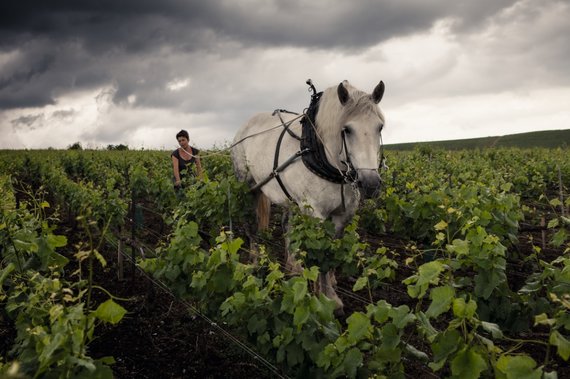 while the family’s 240ha vineyard estate, large enough to provide around two-thirds of the grapes it needs, is the cornerstone of the business.
while the family’s 240ha vineyard estate, large enough to provide around two-thirds of the grapes it needs, is the cornerstone of the business.
It seems hard to believe that a decade has passed since Frédéric Rouzaud’s reign at the head of the business began. He’s the seventh generation to lead the business and has taken over seamlessly from his father, Jean-Claude, a hard act to follow, even when they had worked together for a decade first. He has been helped in this by having as his right hand man head winemaker Jean-Baptiste Lécaillon.
Recognising his crucial role in the business, the same year he took over one of Rouzaud’s first moves was to make Lécaillon executive vice president, in charge of production of all the Roederer wineries.
For such a conservative, traditional house, the two of them have overseen quite revolutionary changes. These include the first new wine in the Roederer range for more than 40 years since Cristal Rosé was initially released in 1974 with the launch of Brut Nature 2006. This is a single cru, zero dosage, vintage champagne from a biodynamically farmed vineyard, is made at lower than normal pressure, comes from a three-varietal vineyard blend and is part oak fermented. Thus it encompasses several observable trends in one cuvée, quite a development from a major house that is almost alone in not even making an unvintaged rosé style – only four other producers in our top 30 don’t and two of these are Chardonnay specialists.
Under their watch Roederer now has the largest organically and biodynamically farmed estate in Champagne – 150 of its 410 parcels are cultivated in line with biodynamic principles. A good deal of it is used for making prestige cuvée Cristal – more than half the fruit used is from these parcels. Lécaillon sees winemaking as a continuation of the vineyard work.
CHANGING WAYS
“Since Frédéric arrived in 1996 we’ve gradually changed the way we farm with ploughing, working organically and then biodynamically and also going back to more oak fermentation because the material we have is stronger and richer so it can handle more aeriation in oak,” says Lécaillon. “Today around a quarter of Cristal is oak fermented, the rest is in stainless steel. The dosage level has come down too, in order to let the wine shine. It’s decreased by 3gm/l between 1999 and 2014, it used to be between 12-13gm/l. Winemaking is a slalom between oxidation and reduction. Trying to aerate those [vats] that need oxygen and protect those that don’t. The riper fruit from south east-facing slopes tends to go into stainless steel tanks because we want to keep the freshness.”
As a team, while recognising the importance of the house’s history, they are constantly looking at making small changes to see if anything can be done better than in the past. The flagship Brut Premier blend has been a major beneficiary. Researching a piece about those in Champagne experimenting by using less sugar in the prise de mousse to create champagnes at a lower pressure than the standard six bars, I went to see Lécaillon. I discovered he now bottles different sizes of the mainstream Brut Premier blend at different pressures.
Taking the magnum he sees as the perfect sized receptacle for producing champagne, he bases all his calculations on that format and adjusts the amount of sugar to use for the prise de mousse for the others, and thus the end pressure in the bottle. The benchmark magnum gets 20gms/l, the bottle 22gms/l and the half bottle the highest at 24gms/l. It needs this higher amount to help protect it as half-bottles are more susceptible to oxidation, says Lécaillon. “The bigger the format the smaller pressure we want.”
Such fine tuning is only possible thanks to recent scientific progress that makes it possible to test the pressure inside a bottle without opening it. The complexity of the Premier Brut blend has also been increased by other tiny changes, such as the additional use of reserve wine, now typically at least 30% of the blend and usually coming from the seven previous years before the harvest on which it is based.
4. POL ROGER
Over the past decade when champagne in general has gone through a tricky period in terms of its wider image, Pol Roger has undergone a makeover which has helped establish it among the first rank brands. So it’s 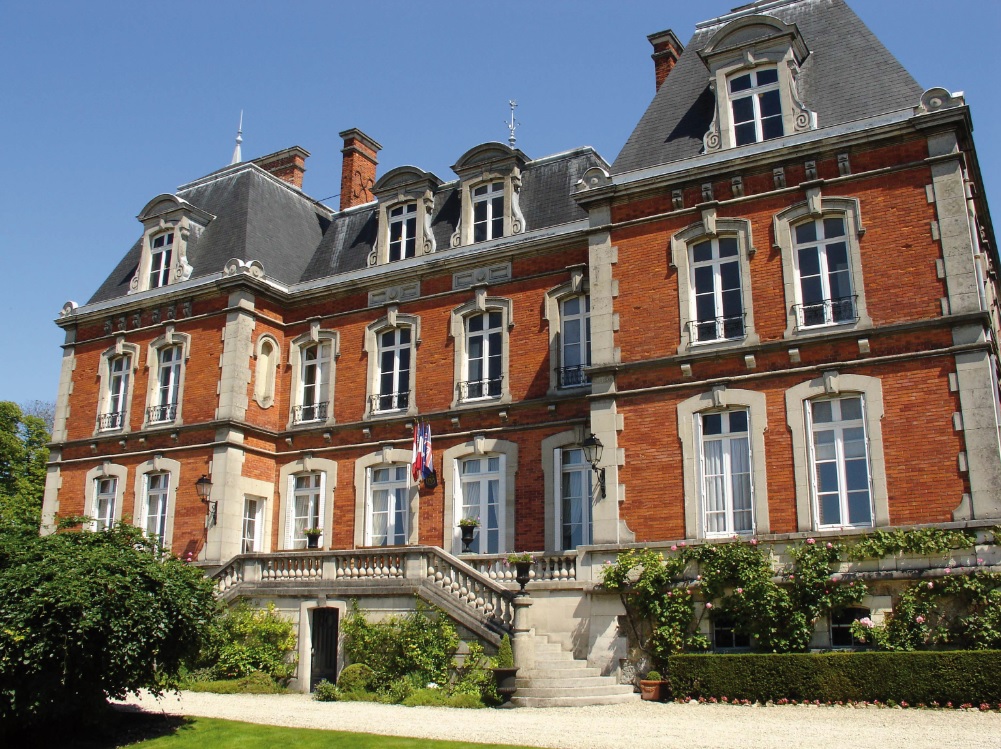 good to see the Drinks International voting Academy reflecting the wider viewpoint in the trade with Pol achieving a top-five finish for the second year in succession.
good to see the Drinks International voting Academy reflecting the wider viewpoint in the trade with Pol achieving a top-five finish for the second year in succession.
I hadn’t been back to Pol Roger for several years, so a visit last December was a chance to catch up, in person, with all the changes that have been made over the past few. The first thing to note on arrival is that Pol now has a fittingly grand entrance to what Winston Churchill considered the best drinking address in Champagne. But impressive as this is, it’s really in the winery where the most significant investment has been made, with row after row of shiny new stainless steel tanks of all sizes, lined up in a spotlessly clean environment.
Now, as is the modern way in Champagne, any small parcel of juice from a particular cru, even a specific plot, can be kept separately. For head winemaker Dominique Petit, poached from Krug in the late ’90s, this enables a large degree of fine tuning for all the cuvées in the Pol Roger range. That has made possible the launching of a zero-dosage style and reducing the dosage in the house’s flagship Brut Réserve NV from 12gm/l to 9gm/l, so there’s now a bit of extra zip there, as well as the mid-palate richness extra lees and post-disgorgement ageing brings.
Vintage releases, always a strength at Pol Roger, have benefitted too. at a recent tasting in London of 2002 prestige cuvées, a magnum of regular Pol Roger 2002, slipped in among some of the most expensive Champagnes in the market, outperformed many, selling at well over twice its price.
5. BILLECART-SALMON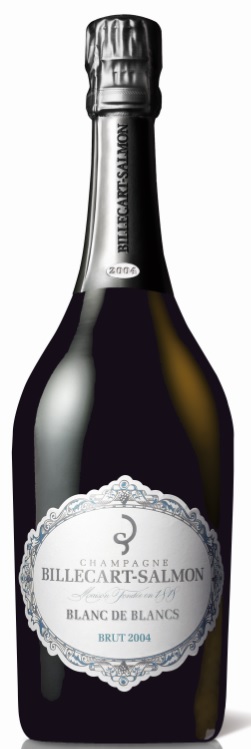
It’s great to see Billecart-Salmon making it into the top five Most Admired Champagne Brands for the first time. I’ve always had a soft spot for the classy, understated wines from this excellent house in the centre of Mareuil-sur-Aÿ. Founded in the early part of the 19th century, it’s another family business where brothers Antoine and François Roland-Billecart are the sixth generation at the helm.
With production around the 2m bottle mark, there’s no ambition to grow further, says Antoine. Investment is going into the vines, buying small parcels with a Grand Cru focus in places such as Ambonnay, Bouzy, Chouilly and Avize. The brothers are also adding some more 500-litres demi-muids of Transylvanian oak, made in Austria, which they like for its subtle effect and, once 95% of the tannins have gone, use for holding reserve wines.
We tasted some of the current range with chef de cave François Domi, one of the unsung heroes of the Champenois scene, who has worked his magic across the Billecart range for nearly three decades. First up is the current Extra Brut blend, with a 50% 2012 harvest base plus reserve wines from 2010, ’09, ’08 and a little 2011 Chardonnay. It’s the same blend as the Brut Réserve, says Roland-Billecart – 40% Pinot Noir plus 30% each of Meunier and Chardonnay. The Brut Resérve with its bones laid bare and only 1.5gms/l residual sugar is a great palate livener just after nine in the morning, but with some recognisable depth, thanks to an extra year’s lees ageing.
We follow with the 2004 Blanc de Blancs, made from just four grands crus – Avize, Cramant, Mesnil-sur-Oger and Chouilly – with 30% of the juice barrel fermented. Good when first released at the start of 2015, this has developed into one of the best wines I’ve tasted from the attractive 2004 vintage, with a creamy, silky texture and white truffle aromas. The Chardonnay was better than the Pinot Noir in 2004 says Domi, and here is living proof of that in the glass. Hard to surpass but the 2002 Cuvée Nicolas- François Billecart that follows manages it. With this quality in the bottle we’d expect a top-five finish next year too.
6. DOM PÉRIGNON
Back in the Most Admired top six, in 2016 the focus at Dom Pérignon was on the pink cuvées with the latest and 25th vintage from 2005 previewed in April and a new P2 version of the 1996 Rosé – or Second Plenitude as chief winemaker Richard Geoffroy describes it – released in the autumn. Like Benoït Gouet, winemaker at sister brand Moët & Chandon, Geoffroy is increasingly putting the emphasis on the red wine, all Pinot Noir, used in blending his rosés.
The Pinot Noir comes from a selection of south-facing slopes in the crus of Hautvillers, Bouzy and Aÿ, with the latter Grand Cru most typically used because: “We need to reach a very high level of maturity and phenolic maturity [in the rosé]. We don’t need the same level for the white Dom Pérignon,” says Geoffroy’s right-hand man and pink specialist, Vincent Chaperon.
This starts in the vineyard with lower vigour vines designated for Pinot Noir red wine production and maceration techniques such as those in Burgundy employed in the vinification. “We’re looking to extract the personality of the Pinot Noir but not go too far,” says Chaperon. “We don’t want too much tannin or power, because it needs to be integrated in the Dom Pérignon blend.” Clearly the ratio of Pinot Noir to Chardonnay in pink DP has been increasing and Chaperon reveals it rose to 64% in the 2004 blend with 29% of that vinified as red wine.
With the latest 2005 release that has dropped back to 55% with 27% red wine, still a high figure compared to most other pink cuvées produced in Champagne. It was slightly lower in 2005 because the Pinot Noir in that harvest was more powerful, says Chaperon. In fact in 2005 the team took the risky decision to wait, in a harvest where botrytis was increasingly a worry, in an effort to get the perfect maturity for Dom Pérignon rosé at the expense of material for the Blanc volume.
7. CHARLES HEIDSIECK
The work rehabilitating the Charles Heidsieck brand into the upper echelons of the champagne hierarchy continues apace and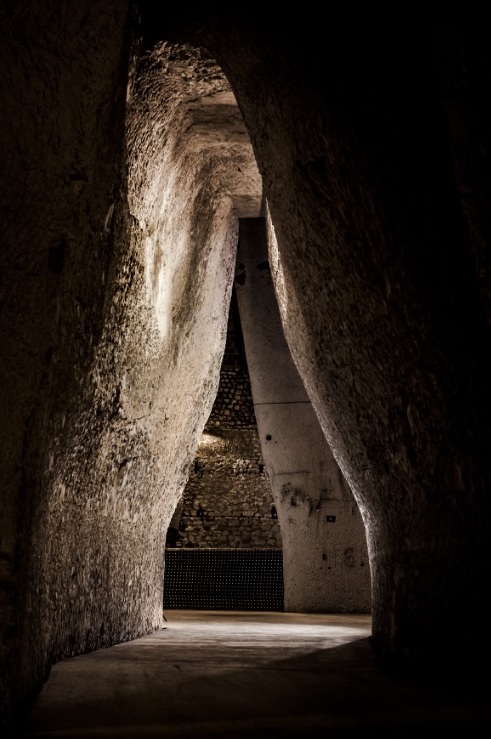 is reflected by its success with a top-10 finish in this and last year’s Most Admired voting. Good work by UK agents Liberty Wines is seeing it grace more restaurant lists in Britain and its discounting days are long since passed. When the Champagne Charlie monicker can be reactivated – no doubt there is a vintage in waiting in the Reims cellars – the next phase can begin in earnest, particularly in the US market where that name has particular resonance.
is reflected by its success with a top-10 finish in this and last year’s Most Admired voting. Good work by UK agents Liberty Wines is seeing it grace more restaurant lists in Britain and its discounting days are long since passed. When the Champagne Charlie monicker can be reactivated – no doubt there is a vintage in waiting in the Reims cellars – the next phase can begin in earnest, particularly in the US market where that name has particular resonance.
Head winemaker Cyril Brun, who took over at Heidsieck in February 2015, now has two vintages under his belt and is growing into a dream job in his own quiet, modest way. In December, looking to the future, we tasted some 2016 vins clairs together, with the Pinot Meuniers, only used in Charles Brut Réserve white and rosé, looking particularly good, while the Chardonnays lack their usual aggressive vivacity. “This year we will get the acidity from Pinot Noir,” Brun says, which we see in the intensely grapefruit-laced Verzy sample.
Then we looked back at the two current Brut Réserves, both based on the fine 2008 harvest, and as such typically with at least four more years’ bottle age than most competitive brands. Of the two I sense it will be the rosé that’s more likely to get a tweak or two in the short term, perhaps a little freshening. We finished with a gorgeously rich, toasty 1985 Blanc des Millénaires and I learned with some sadness that the very last batch of the current 1995 Blanc des Millénaires (made by the late, great Daniel Thibault) has just been released.
8. RUINART
Ruinart is the sort of brand the other major groups in Champagne would love to own, for its lineage, grand chalk ‘crayères’ – classified as an historical monument in 1931 and arguably still the most 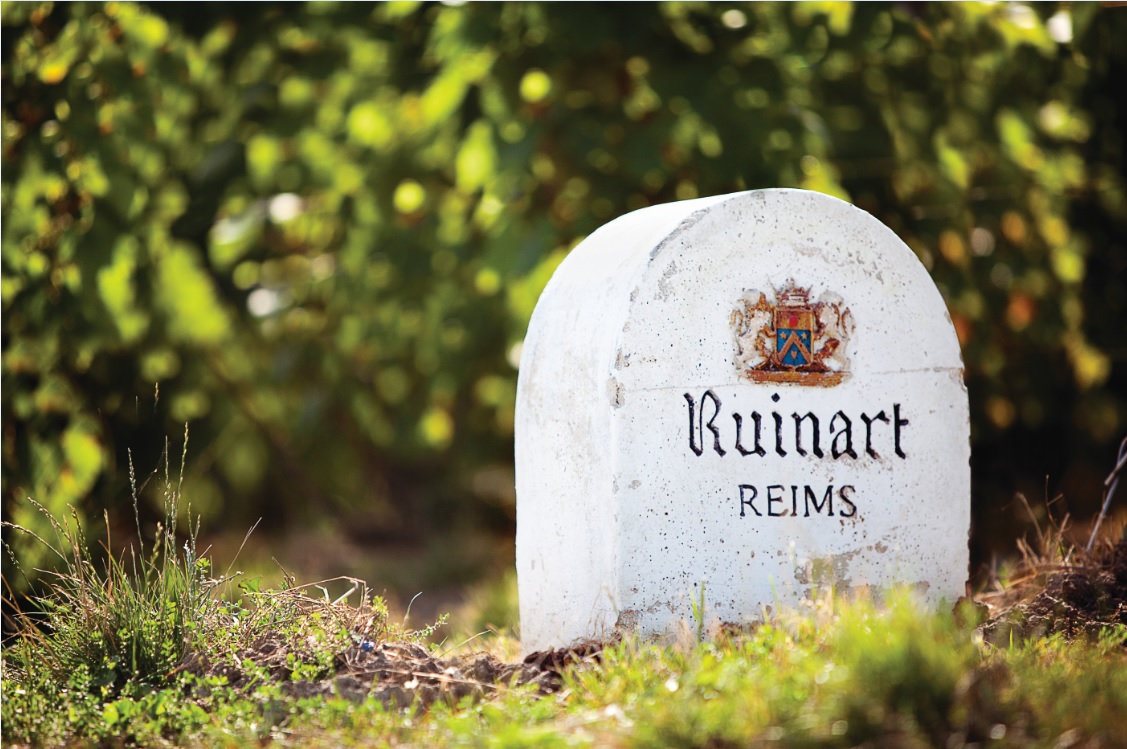 impressive to visit in Reims today – plus the quality and appeal of its wines. Unsullied by discounting, it also boasts a famous prestige cuvée, the name a reference to Dom Thierry Ruinart, a contemporary and friend of Dom Pérignon’s. Though not a big brand such as Moët or Clicquot, it’s always had a good image and therefore great potential.
impressive to visit in Reims today – plus the quality and appeal of its wines. Unsullied by discounting, it also boasts a famous prestige cuvée, the name a reference to Dom Thierry Ruinart, a contemporary and friend of Dom Pérignon’s. Though not a big brand such as Moët or Clicquot, it’s always had a good image and therefore great potential.
While for 40 years or so owners Moët then LVMH left it alone, over the past decade they’ve transformed the business, concentrating on the premium end. The straight vintage is now barely seen outside France and the well-made ‘R’ de Ruinart non-vintage is no longer a focus. Instead the emphasis is on the Blanc de Blancs NV vintage style, sales of which have grown exponentially over the past few years. And these sales have been at a very premium price level in retail, around the £50 a bottle mark (in the US typically more than US$70), higher still in the on-trade.
There has been more done in 2016 with the NV rosé style and chief executive Frédéris Dufour says: “In 2016 the volume growth was overall balanced between ‘R’, Blanc de Blancs and Rosé demonstrating the desireability of all the product range.” The main problem for chef de cave Frédérick Panaïotis, at the helm with Ruinart for 10 years this summer, is finding enough Chardonnay to cope with this growing demand. While lack of direct competition helps – few other brands make all Chardonnay non-vintage champagne – one of Panaïotis’s secrets is to make the wine appealing.
That is what champagne should be all about and our voting panel clearly approves.
9. TAITTINGER
Large family businesses in Champagne that still bear the name of the family are rarities. This wouldn’t still be one without the dogged determination to keep hold of ownership shown by Pierre-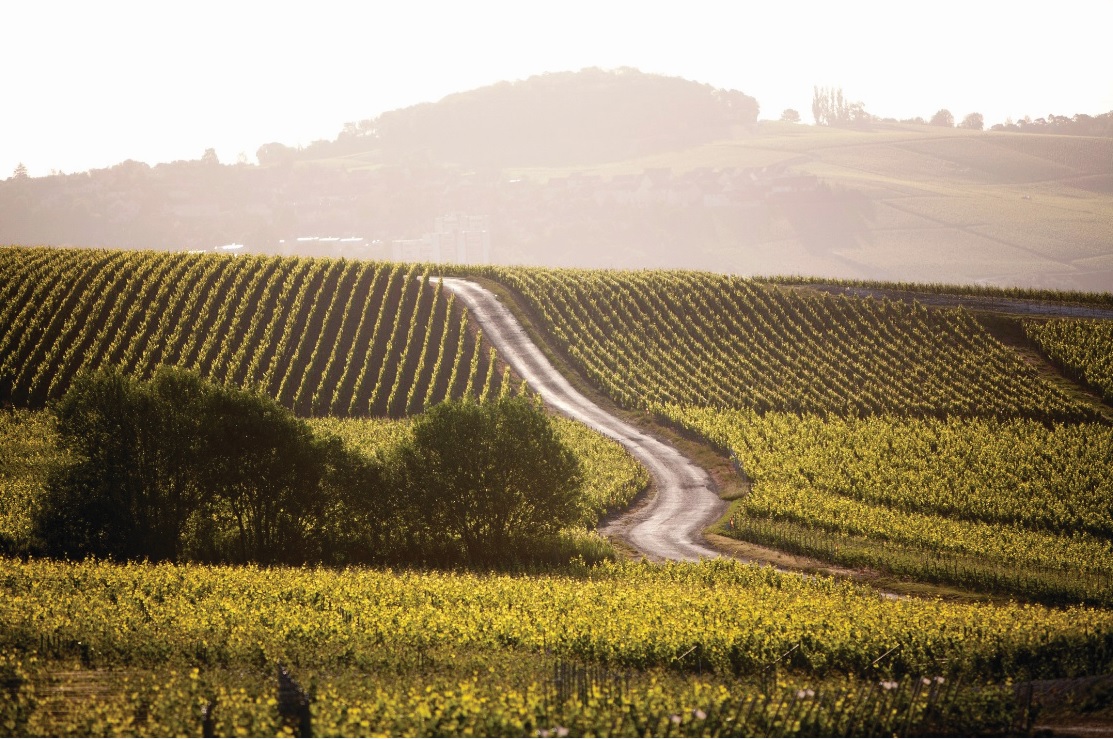 Emmanuel Taittinger, whose children Clovis and Vitalie, now work beside him. While Ruinart may boast the most widely recognised non-vintage Blanc de Blancs, Taittinger has claim to produce one of the most sought after, vintage, all-Chardonnay offerings in Comtes de Champagne. Sourced wholly from Grands Crus Côte des Blancs sites, its linear, rapier-like acidity is quite a contrast to the more powerful Dom Ruinart style, where richer Montagne de Reims Chardonnay plays an important part.
Emmanuel Taittinger, whose children Clovis and Vitalie, now work beside him. While Ruinart may boast the most widely recognised non-vintage Blanc de Blancs, Taittinger has claim to produce one of the most sought after, vintage, all-Chardonnay offerings in Comtes de Champagne. Sourced wholly from Grands Crus Côte des Blancs sites, its linear, rapier-like acidity is quite a contrast to the more powerful Dom Ruinart style, where richer Montagne de Reims Chardonnay plays an important part.
Like the other top-scoring family business in our survey, significant vineyard holdings of some 288ha which supply around half of its needs, help Taittinger compete with the likes of LVMH and Pernod Ricard-owned marques on international markets, as it needs to with 5m-plus bottles to sell.
With a significant proportion of its vineyards planted to Chardonnay in the Côte des Blancs, Taittinger also boasts one of the non-vintage styles with the largest percentages of Chardonnay in the blend at around 40%. The Chardonnay-led theme is continued in the Prelude Grands Cru blend, unvintaged but always from a single harvest, where half the assemblage is Chardonnay, mostly from Avize and Le Mesnil-sur-Oger. Single vineyard cuvée Les Folies de la Marquetterie is another wine that merits more attention. But it’s Comtes de Champagne, a wine that ages terrifically well taking more than a decade to reach its peak, that gets the plaudits. If Taittinger released it as late as Krug first markets its vintage wines, it would have an even greater reputation than it does today.
10. GOSSET
That Gosset’s star is in the ascendency comes as no surprise. Its first top-10 finish in the World’s Most Admired Champagne Brands survey suggests that word is getting around about the high 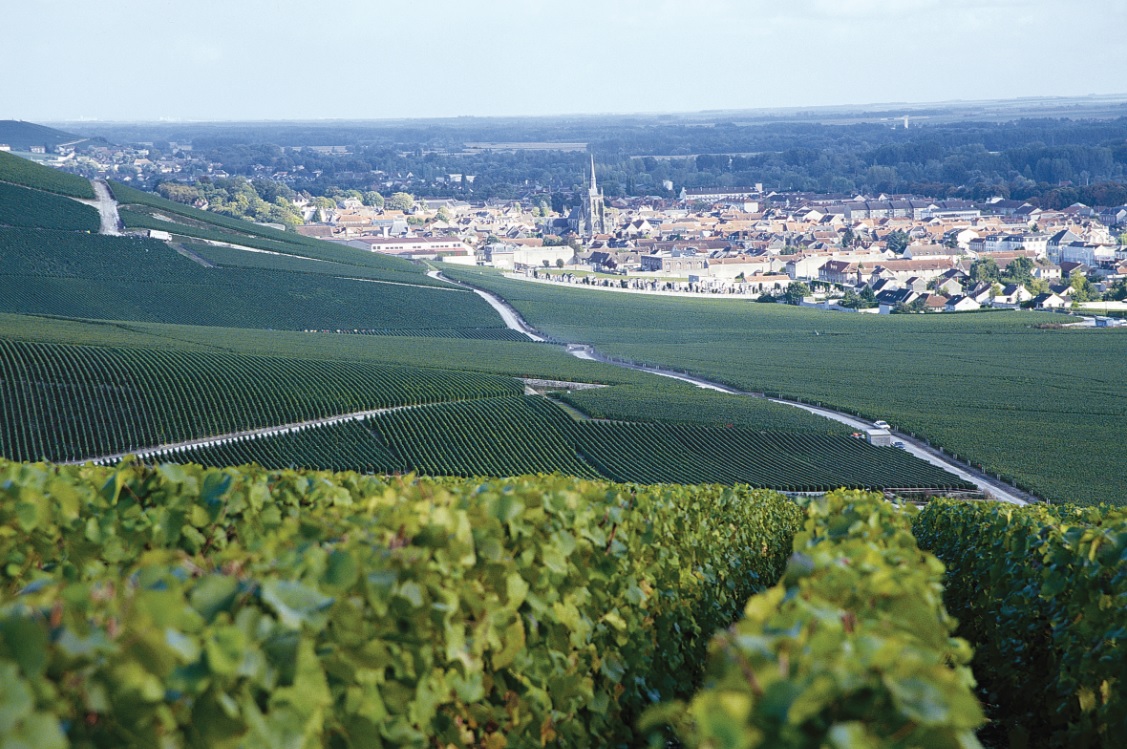 quality-to-price ratio evident across the range. A deeply traditional house, making table wine in Aÿ even before Ruinart was established, its champagnes have a rich, aromatic character that makes them work particularly well with food.
quality-to-price ratio evident across the range. A deeply traditional house, making table wine in Aÿ even before Ruinart was established, its champagnes have a rich, aromatic character that makes them work particularly well with food.
Sadly long-time cellarmaster since 1983 Jean-Pierre Mareigner died in May 2016, but his number two, Odilon de Varine, who worked in tandem with Mareigner for a decade, has taken up the reins, assuring continuity of the Gosset style. It’s a style best defined by its flagship multi-vintage Grande Réserve, always a blend of three different years that’s aged for significantly longer than most non-vintage cuvées. With impressive complexity, concentration and length, this cuvée regularly outperforms many big-name vintage champagnes.
Its partner, Grand Blanc de Blancs NV, also a three-vintage blend of Côtes des Blancs villages such as Avize, Chouilly, Cramant, Oger, Mesnil-sur-Oger and Cuis with Côtes des Noirs Chardonnay from Tour-sur-Marne, Trépail and Villers-Marmery, was first launched in 2011. Grand Rosé is a lovely fragrant, fruity, delicately hued pink of serious class.
While I’ve always had a slight personal preference for the vintage wines Gosset sells under its Grand Millesimé label, its prestige Cuvée Celebris, which can seem quite austere on release in its youth, ages into something impressive over time as a recent tasting in London of all six vintages so far released – 1988, 1990, 1995, 1998, 2002 and 2004 – demonstrated to good effect. The 2002 also performed very well in a vertical tasting of ’02 of prestige cuvées overseen by Jancis Robinson, outscoring many more expensive marques.
11. SALON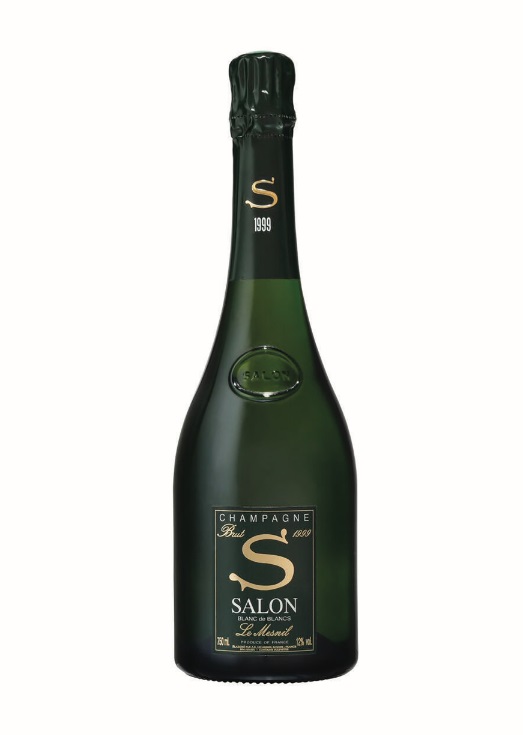
Along with Taittinger’s Comtes de Champagne, Salon is probably the best known and certainly the highest-priced Blanc de Blancs style produced in Champagne. Like Comtes, it’s pure Côte des Blancs Chardonnay, but while Comte is a five grand cru blend – Avize, Chouilly, Cramant, Oger and Mesnil-sur-Oger – Salon is made purely from le Mesnil-sur-Oger fruit.
Salon, which is based with sister brand Delamotte (see separate entry on page 20) in the village of Le Mesnil, is unusual if not unique in Champagne in producing just one, always vintaged, cuvée made from the 1ha plot behind the winery, plus 19 other small plots. Total production is usually around 60,000 bottles, but in the case of the 39th release from the 2004 vintage this was reduced to 42,000 bottles and 3,000 magnums, following two green harvests in the summer. As president of the house Didier Depond notes, there were worries that the large yield generally seen in Champagne that harvest would lead to some dilution.
At the launch in April 2016 the ’04, if not closed, was pretty linear, though it clearly has the power this cru typically exhibits with a zesty freshness that suggests a long life ahead. There was another opportunity to taste some wines from the Salon back catalogue, an exciting prospect as typically these wines age extremely well, slowly over a very long period. In their youth, they are often unapproachably steely and quite impenetrable – even unattractive. In a line-up of eight other vintages from the celebrated 2002 back to 1966, while the ’99 is developing very nicely a peak was reached around the ‘88 which has developed an amazing saline, chalky complexity.
12. JACQUESSON
When they took over the family business in Dizy from their father in 1988, the Chiquet brothers, Jean-Hervé and Laurent, were not very happy with what they inherited. They sold off 5ha of vineyard they didn’t think good enough and set about changing how their land was worked. Today their vineyards, which provide around 80% of their needs, are largely farmed organically. As Jean-Hervé says: “Terroir, even great terroir, is worth nothing unless properly looked after.”
Their vines are in two main areas, the Grande Vallée de la Marne and the Côte des Blancs. The first group is in the villages of nearby Hautvillers, and the Grand Cru of Aÿ, which adjoins Dizy to the east, on slopes facing east, south or south west, where chalk lies at varying depths. The Côte des Blancs holdings are in the grands crus of Avize and Oiry, south-facing parcels with chalk showing on the surface. What they buy in largely comes from neighbours in the same crus.
While they gradually made lots of changes, the turning point came, says Jean-Hervé, with 2000 and 2002 harvests with Cuvée 700 created and then the initial single vineyard champagnes being bottled in 2002. The first development, arguably the most significant and groundbreaking in Champagne, was when in 2000 they changed their non-vintage cuvée from a consistently recognisable style, year after year, to the best possible blend they could produce from any individual harvest.
After 28 vintages working together the Chiquet brothers’ range at Jacquesson has evolved into Cuvée 700 (currently Cuvée 739 based on the 2011 harvest) a late disgorged version of this, at present Cuvée n° 735 Dégorgement Tardif (based on 2007), plus four single vineyard vintage wines from Dizy (two), Aÿ and Avize.
13. HENRIOT
Another of this year’s success stories in the Most Admired Champagne Brands is family-run – a family whose history in the Champagne region dates back to the first half of the 17th century, while the house of Henriot was 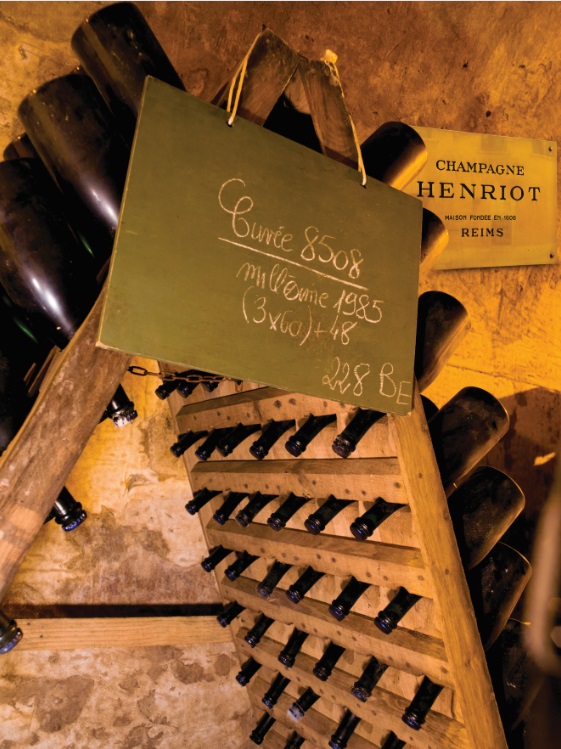 established in 1808. Henriot has risen further than any other top-30 brand, moving up 10 places from 23 to 13.
established in 1808. Henriot has risen further than any other top-30 brand, moving up 10 places from 23 to 13.
After some uncertainty about the direction of the business following the death of patriarch Joseph Henriot in April 2015, things have settled down with his nephew, Gilles de Larouzière, now heading up a wider business that includes Bouchard Père et Fils in Beaune and William Fèvre in Chablis. There’s a great synergy between these three renowned brands in that top-quality Chardonnay production is a central facet of their business. This was emphatically demonstrated at a dinner in London last November at which the stars were Grand Cru Chablis Les Clos 2005, Grand Cru Burgundy Corton Charlemagne 1955 and the all Grand Cru prestige Cuvée Enchanteleurs 1959. Thanks to Joseph Henriot’s generosity it’s the third time I’ve drunk the latter champagne, one of the greatest fizzes I’ve tasted.
Henriot is very much a Chardonnay-led house – although Enchanteleurs is a 50/50 Chardonnay/Pinot Noir blend – its Brut Souverain NV contains around 50%, considerably more than most other houses. Its flagship Souverain Blanc NV is a 100% Chardonnay style blended from a range of top crus for the variety, including Côte des Blancs villages Mesnil, Chouilly, Avize and Vertus, but also Montgueux and Trépail, both famous for different styles of Chardonnay, one rich and full-bodied, the latter powerful, lean and long-lived. It gets the extra time in bottle that wines of such pedigree demand to show more complex expression.
14. DELAMOTTE
Sister brand to Salon, Delamotte has stormed up the Most Admired Champagne Brands ratings this year, coming up from just outside the top 30 in 2016. Speculating as to why this may be, I’m tempted to think  it has much to do with value. The quality of the Delamotte wines looks high compared with the very reasonable prices. When we talked earlier in this survey about a lack of competitors for Ruinart Blanc de Blancs non-vintage style, such as Henriot on the previous page, Delamotte Blanc de Blancs is an obvious contender. For greater commercial success, it perhaps just lacks Ruinart’s drinkability, but for Blanc de Blancs purists it is all impressively sourced from Grands Crus vineyards in Côte des Blancs villages of Le Mesnil-sur-Oger, Oger, Avize and Cramant.
it has much to do with value. The quality of the Delamotte wines looks high compared with the very reasonable prices. When we talked earlier in this survey about a lack of competitors for Ruinart Blanc de Blancs non-vintage style, such as Henriot on the previous page, Delamotte Blanc de Blancs is an obvious contender. For greater commercial success, it perhaps just lacks Ruinart’s drinkability, but for Blanc de Blancs purists it is all impressively sourced from Grands Crus vineyards in Côte des Blancs villages of Le Mesnil-sur-Oger, Oger, Avize and Cramant.
It may also be slightly handicapped by the high-profile image of Salon, but as the sixth-oldest house in Champagne, founded back in 1760, compared with new boy on the block Salon, a house only created in 1911, it shouldn’t be overshadowed.
The Delamotte vintage Blanc de Blancs are a class act – distinctly age-worthy wines in their own right. At the Salon 2004 launch in April 2016 the two last vintages from 2004 and 2007 both still seemed youthful, but have a concentration, freshness and grip that would encourage me to cellar them for a few years, particularly the 2004.
UK Agents Corney & Barrow also showed Delamotte Collection vintages from 1999 and 1985. Priced at £108 and £373 respectively, these had every element I’d want to find in top-class Blanc de Blancs champagne – fresh floral notes, a lovely honeyed mid-palate richness, textural creaminess and a long, complex finish.
15. VEUVE CLICQUOT
It shows how long it takes for a chef de cave to make their mark – or should I say marque – when you consider that Dominique Demarville, who joined Veuve Clicquot back in 2006, has only just overseen the release of a vintage cuvée he made wholly himself. Up to now, he’s been talking about his predecessor Jacques Peters’ vintage wines and, in the case of long-aged, pre-1979 Cave Privée wines, his predecessor’s predecessor, Charles Delhaye.
Like Peters, whose first solo vintage was the very fine 1988 – though he always preferred the riper follow-on ’89, particularly the rosé – Demarville has had the good luck to start with a cracking year in 2008. And he’s put his particular mark on this vintage by returning, for the first time since 1961, to some fermentation to oak foudres. Demarville bought 30 such large vessels, made in the forests of central France, Allier and Vosges, for the benefits they bring to the assemblage, which are some micro-oxygenation which confers textural qualities, plus aromas of wood, vanilla and toast.
For this ’08 vintage he only used around 5% of oak fermented wines in the final blend, but the effect is noticeable. Perhaps more significantly, Demarville has also started using some oak-fermented juice in the make-up of Clicquot’s Yellow Label non-vintage, as part of his stated long-term aim to improve the quality of this important wine that accounts for well over 80% of production.
One of other ways he intends to achieve this is by declaring vintages less often. This would also have the benefit of making vintages that much more special. For Yellow Label, the chance to have more of the quality material that had been going into making vintages will really help, and the barrel-fermented juice will be part of this juice.
